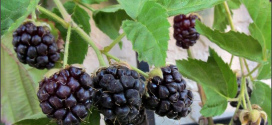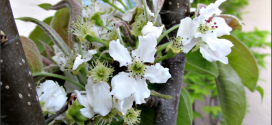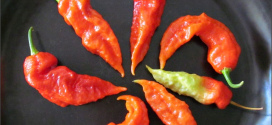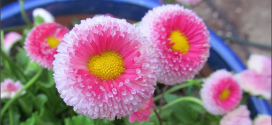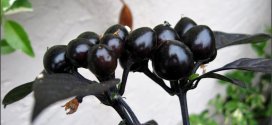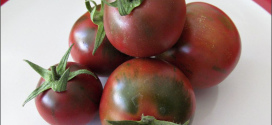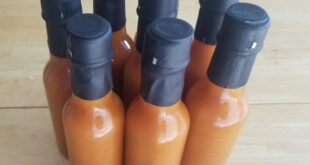Raised beds provide the same advantages as container pots but for less cost. The primary disadvantage is you can’t move it. Both raised beds and pots give you at least a foot-depth of loose soil with good drainage. It is easier to have denser plantings because you do not use rows. See This Old House’s video on Raised Beds.
Read More »admin
Blackberry
Blackberries are one of the easiest fruits to grow at home. They are a native species to the United States and grow as a small shrub or trailing vine. The fruit from this plant can be used for table fruit, syrup, jams and jelly. How to Plant, Care, Prune and Harvest Blackberry Bushes Blackberries are produced on the canes of …
Read More »Asian Pear
Asian pear (aka Chinese, Japanese, Oriental, sand and apple pear). They are not apples. There are several differences between Asian pears and the more common European pear. Asian pears reach optimum quality when allowed to ripen on the tree, similar to apples and peaches. European pears are usually harvested in a green stage and allowed to ripen at room temperature. …
Read More »Chile – Bhut Jolokia
The Bhut Jolokia (aka Ghost pepper) is one of the world’s hottest chili peppers. From seed planting to harvest, it takes roughly 160 days for the “Bhut Jolokia” plant to produce mature peppers. Starting seeds indoors 8 to 10 weeks prior to consistent outdoor temperatures of 70 degrees Fahrenheit or warmer will produce starts ready for transplant into the garden …
Read More »English Daisy
English Daisies look like tiny daisies. Technically a perennial, English daisy is usually best treated as a biennial (it takes two years to bloom and then dies in the fall) in the South and an annual in the North. Plants survive down to about 10 degrees F so they can be planted in the fall in the South for early-spring …
Read More »Chile – Black Pearl
Black Pearl Chile. Originally from Mexico. When fully grown the Black Pearl Plant looks great, purple to dark leaves and fruits turning from shiny black to red when fully ripped. The plant is normally fairly low maintenance and is normally quite easy to grow, as long as a level of basic care is provided throughout the year. Being aware of …
Read More »Tomato – Violet Jasper
Violet Jasper is a unique cultivar from China. First offered at Seed Savers 2009 Yearbook by Hristo Hristov of Bulgaria as Tzi Bi U. Produces large, sturdy, regular leaf plants that yields clusters of jewel-like, 1-3 oz., smooth, purplish-red tomatoes with iridescent green streaks and a dark-purple red flesh. Fruit starts out with darker green stripes on typical unripe tomato …
Read More »Tomato – Speckled Roman
AKA Striped Roman tomato. The source of this tomato is John Swenson. A cross between Antique Roman and Banana Legs. The tomato has the distinct end nipple of the latter. Compact, indeterminate, regular-leaf tomato plants that have a high yield of very intriguingly beautiful, meaty, 4-6-inch long, orange-red paste tomato with good flavors and wavy yellow stripes. Looks like a …
Read More »Salvia greggii
Salvia greggii, the autumn sage, is a herbaceous perennial plant native to a long, narrow area from southwest Texas, through the Chihuahuan Desert and into the Mexican state of San Luis Potosi, typically growing in rocky soils at elevations from 5,000 to 9,000 ft (1,500 to 2,700 m). It was named and described in 1870 by botanist Asa Gray after …
Read More »Carrot Ginger Hot Sauce
Introducing the Creaper! My hot sauce made with home-grown Carolina Reaper chile peppers, carrots, ginger, and some other stuff. I will say it again later but I am saying it here first: Use a food mill to filter out the pulp. It quickly and efficiently squeezes the thick sauce to extract the juice and leave behind the chile pepper seeds …
Read More »